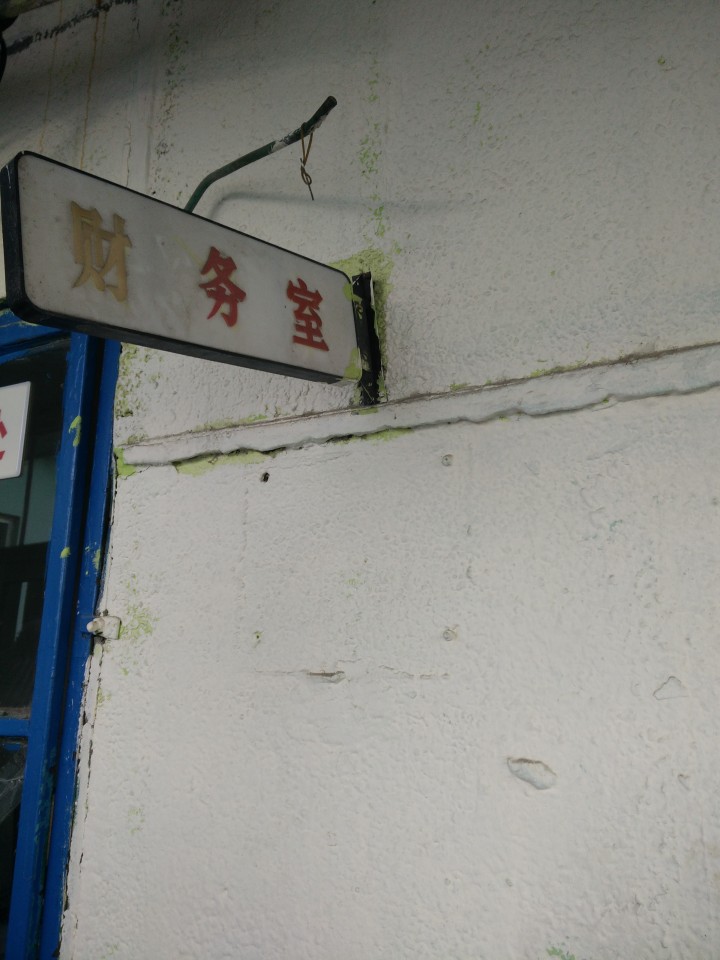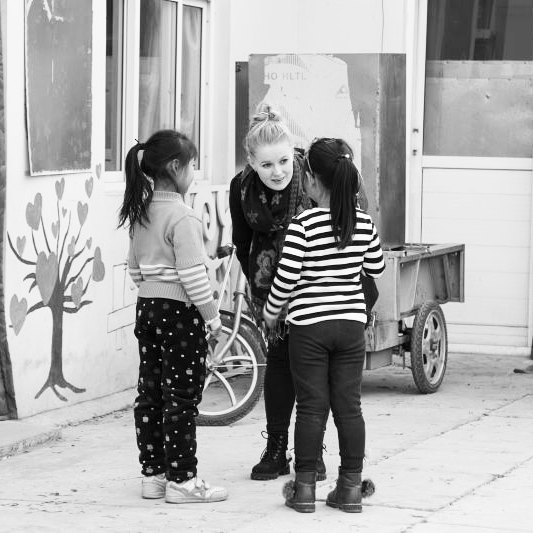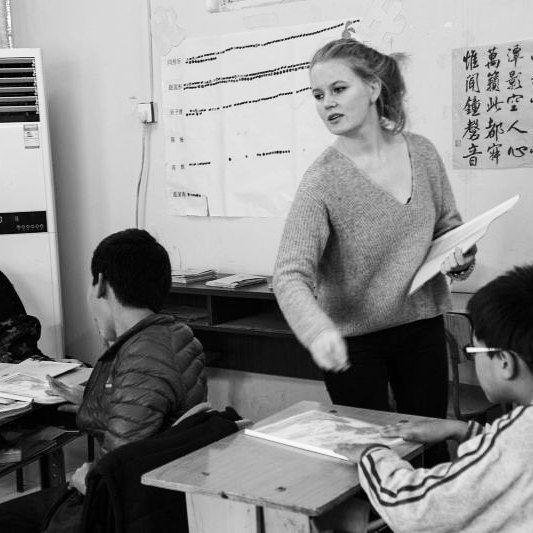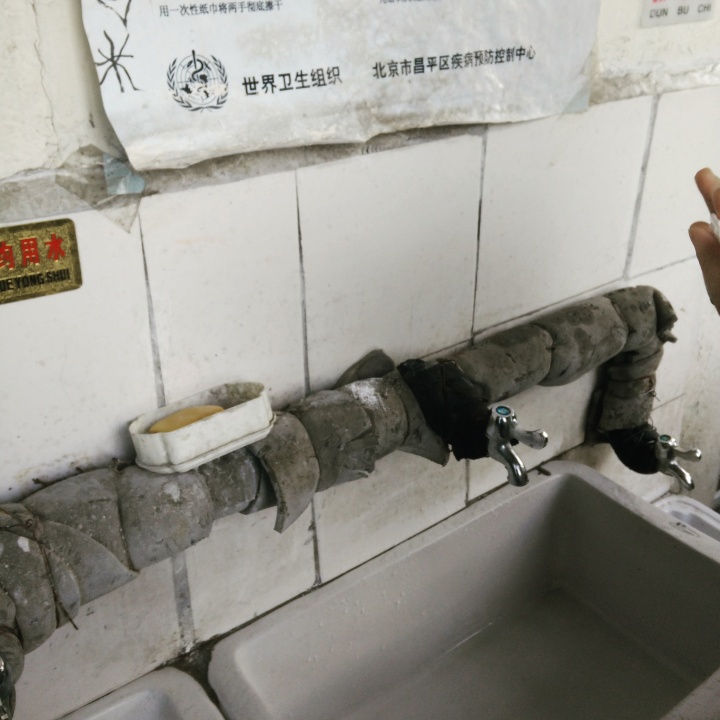About an hour’s travel north of the people’s university, a little bit east of Yanjiao, you find the Huilongguan area.
Huilongguan, like many other parts in the outskirts of Beijing, consists of a mixture of affordable, but nice housing communities. It is place for concrete highrise buildings, specked with hundreds and hundreds of identical little balconies. Peeking through fences as you walk the street, reveals playgrounds with brightly colored rubber concrete and brand new play structures inhabited by immaculately dressed or uniformed children. It’s a place where the new Chinese middle class enjoys a quiet life. A place for living the Chinese dream.
But China is a land of big contrasts, and Huilongguan is more than prestigious preschools and luxurious housing projects.

In a way, I think simplicity is about aligning our values (what we think) with our actions (what we do).
Some of the things that have made the biggest difference in my life are not things that came naturally to me. What made a real difference, is opportunity.
A large part of what has helped me succeed in my life so far, has been privilege. When I was a child, my parents sent me to great schools, let me participate in enriching activities and extra-curricular activities and encouraged and helped me in my studies.
So, what do I value? – I value all children getting the same opportunity, let’s just call it a fair chance to succeed in their lives, just like I had.
To tell the truth, I came here, expecting to spend five months without too big of a commitment to anything. I was expecting to spend my weekends partying in SanLiTun and my weekdays reading all the books I never got around to somewhere between my high school studies and two jobs in Denmark.
And how wonderfully wrong that expectation came to be!
A big problem in Beijing, is children getting caught in the hukou system. The children of the city’s 北漂 lose their right to public education, health care etc.
According to the China Labour Bulletin, as much as 36% of the Chinese workforce consists of rural migrant workers (农民工). Many of these workers children are born in the cities where their parents are working – however, hukou is hereditary so a child who may have only ever known Beijing might still be tied to its parents’ home region. Most of these workers work in low wage jobs, such as construction, manufacturing and various service jobs. The average wage of a migrant worker in 2015, was just over 3000rmb – a 7.2% increase from 2014! In comparison, an employee in the public sector – such as a ministry or any sort of administration work, might earn more than twice as much, something like 7500rmb per month!
For China’s migrant workers, working hours are long and job security is rare – although the Chinese government issued a Labour Contract Law to ensure that all laborers would be working under a formal employment contract, very few currently do. According to China Labour Bulletin, less than 20% of China’s migrant workers have pensions, health insurance or any sort of social security net.

For the children of migrant workers in China, the cost of their parents’ work life is steep. Some children are left behind to be cared for by grandparents’ or simply to fend for themselves – these children face loneliness, abuse from adults, they might fall behind in school, and many report lacking emotional support and advice from their parents.
Yet other children become migrants along with their parents. Those children face institutional discrimination – unable to attend public schools or get treatment in public hospitals and clinics, these children often live a life outside of the public system entirely. Parents must depend on private schools for their children’s education. Schools that are often unlicensed or faced with pressure from local governments, in favor of business establishments or apartment projects.
Even after attending an urban school for nine years, many children have trouble passing the gaokao, the national college entrance exam. Many regions set their own curriculum for these exams and students are required to take the exam that corresponds with their hukou.
For more information on the Chinese hukou system, migrant workers and their children, refer to the links at the bottom of this article.

I had heard of this issue before arriving in China, but never imagined it to be a widespread problem, and I assumed that I as an international exchange student in Beijing probably had no place getting involved at all. So, when I met the students from Renmin University’s chapter of the TaoXingZhi association, I was surprised to learn that they provide lessons taught by university students, to these children.
The children of China and their secret world in Beijing
Four low, single story concrete buildings surround a small yard. In the middle of the yard, a flagpole is perched on a small concrete platform. Two open sewers on either side of the yard have been covered up with old concret tiles and rubble. In fact, everything seems to be made of concrete, but the ground is covered in a green fabric, to prevent the playing children from falling on the slippery surface of the concrete. The volunteers have painted friendly images on the walls of the buildings – rainbows, flowers and zoo animals stare blankly out onto the dusty yard where children between 5 and 13 years old are playing. The scene is chaotic. A voice opens over the playing children, from an old speaker clinging to one of the end buildings. Three boys scramble towards the principal’s office.
As we enter the classroom, we are surrounded by a dull darkness – whether caused by the dirty windows or inefficient light fixtures, or both, shall remain a mystery for the rest of my time teaching at the school. The classroom is furnished with a small grouping of rough wooden stools and desks, children are placed two-and-two in long rows facing the blackboard. In the back, more furniture is stacked up – ready for future students to use. A dull smell of dust and mold hovers in the air, it’s as though we can feel yesterday’s rain still dripping from the walls.

For me, the first time I saw the school in Huilongguan I was shocked by the conditions under which the children study. I can see the love and care that goes into keeping the space usable and provide teachers for these children, but from my Scandinavian perspective it was far from how I think children should spend their school days.
But after meeting the kids and teaching my first couple of lessons – even considering my lack of experience and knowledge as a teacher, I felt connected to them and I could see how both them and I could learn a lot from each other. Their laughter, tricks and their spunky moods and different personalities made those Wednesday afternoons the best of my entire week! My only regret is that I could only join for one semester.
When I joined the TaoXingZhi association’s Wednesday project I became part of a small, tight knit group of students. My co-“teachers” came from a variety of academic majors and personal backgrounds, but all were invested in doing all they could to provide the students with the best possible teaching they could. Teaching everything from chemistry to English, even simple activities like paper cutting – they were there every single Wednesday to try and make a difference for these children.
My afternoons in Huilongguan have changed my perspective on the life that I lead completely! I used to think that having it all was the path to the ideal life. Now I have come to realize, that in fact it is quite the opposite. I now find that giving all I can is what truly makes my life rich! And even if sometimes all I can to offer is a few new pieces of English vocabulary and a hug, it still means a lot for my students! Teaching these children has been an incredibly humbling experience. They’re as clever and curious and driven to learn as their more privileged co-citizens. They’re creative and eager to show off their skills to their teachers. Some are great at martial arts, some can draw like a true artist, some braid each other’s hair, some can dance, some can read and write better than all their classmates.
So often, these migrant children are nothing but figures in graphs and data-sets. Meeting them in real life and putting faces to the numbers really puts my own privilege into perspective. These are the children of all of China, and they are living their life under the radar in the suburbs in Beijing. They don’t look different from the local children, but their stories are worlds away.
Links:
China Labour Bulletin article about migrant workers
CNN article about the left behind children